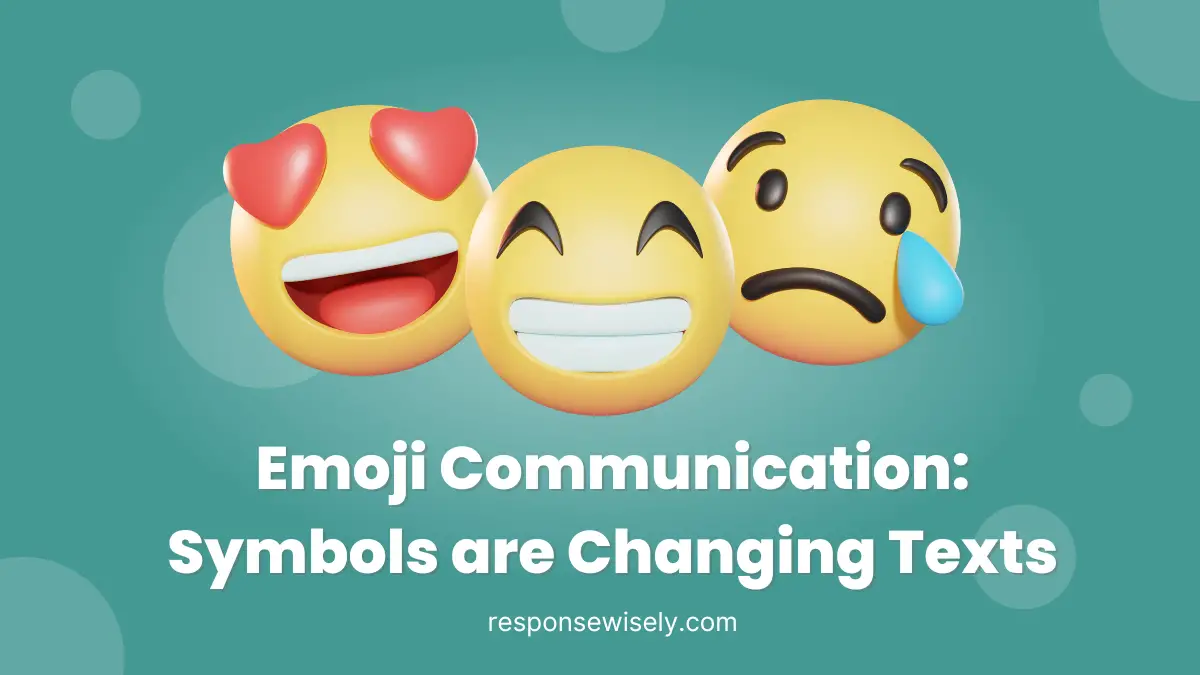In modern digital era, emojis have revolutionized the way we communicate online. From simple smiley faces to elaborate symbols, emojis have become an integral part of text messages, social media posts, and emails. As an expert in digital communication, I’ve witnessed firsthand how emojis have transformed the way we express emotions and convey messages in a concise and impactful manner.
With the rise of emojis, text-based communication has evolved beyond words, allowing us to add depth and personality to our messages. As a seasoned blogger, I’ve explored the power of emojis in enhancing engagement and fostering connections with my audience. Join me as I investigate into the intriguing area of emoji communication and uncover how these tiny symbols are reshaping the way we interact in the digital area.
The Rise of Emojis in Communication
History of Emojis
Emojis have a fascinating history, originating in Japan in the late 1990s. Shigetaka Kurita created the first set of 176 emojis, paving the way for the colorful symbols we use today.
Evolution of Emojis in Texting
From basic smileys to a vast array of symbols, emojis have evolved significantly. Over 92% of people use emojis in their digital communication, showing their widespread popularity and impact.
Impact of Emojis on Communication
Emojis Enhancing Expression
Emojis have significantly enriched communication by allowing for more nuanced expression. Research shows that text messages including emojis are perceived as more friendly and personal. They help to convey emotions in a concise and relatable manner, bridging gaps in digital conversations.
Misinterpretation of Emojis
Even though their popularity, emojis can sometimes be misinterpreted, leading to confusion or misunderstandings. Studies indicate that the same emoji can be interpreted differently based on individual experiences and cultural backgrounds. It’s important to consider context and tone when using emojis to avoid miscommunication.
Cultural Differences in Emoji Usage
Cultural variations play a key role in emoji interpretation and usage. Different regions and demographics may have unique perspectives on the meaning of certain emojis. Understanding these nuances is vital in cross-cultural communication to ensure that messages are received as intended, fostering better connections and preventing potential conflicts.
Future Trends in Emoji Communication
Augmented Reality Emojis
In the future, Augmented Reality (AR) technology could revolutionize how we use emojis in communication by allowing them to be integrated seamlessly into our physical environment. Imagine seeing emojis floating above people’s heads in a crowded room or having animated emojis appear in real-time during video calls. This immersive experience could elevate the emotional connection in conversations and make interactions more engaging and dynamic.
Personalized Emoji Creation
Personalized emojis are expected to become more prevalent as individuals seek unique ways to express themselves. With advancements in technology, creating custom emojis that resemble our physical appearance, emotions, or even specific gestures will likely become easier. This trend could lead to a more personalized and authentic form of communication, where individuals can convey their thoughts and feelings with emojis that truly reflect their identity and personality.
Key Takeaways
- Emojis have revolutionized digital communication, allowing for more expressive and personalized interactions.
- The history of emojis traces back to Japan in the late 1990s, with a significant evolution in their use and popularity over time.
- Emojis enhance expression by conveying emotions concisely, but cultural differences and context can lead to misinterpretations.
- Cultural variations influence emoji interpretation, highlighting the importance of understanding diverse perspectives in communication.
- Future trends in emoji communication include Augmented Reality integration and the rise of personalized emojis for more authentic expression.
Conclusion
Emojis are revolutionizing the way we communicate, with exciting developments on the horizon. Augmented Reality technology is set to transform how emojis are integrated into our daily interactions, enhancing emotional connections and making communication more dynamic. The future holds the promise of personalized emojis tailored to individuals’ unique characteristics, allowing for a more authentic and expressive form of self-representation. As we embrace these advancements, emojis will continue to play a pivotal role in shaping the way we convey emotions and connect with others in the digital age.
Frequently Asked Questions
Q: What does the article discuss about future trends in emoji communication?
A: The article explores the influence of Augmented Reality (AR) technology on the usage of emojis, envisioning a future where emojis become seamlessly integrated into physical environments for enhanced emotional connections.
Q: How could emojis be incorporated into physical environments according to the article?
A: Emojis could potentially float above individuals’ heads in crowded spaces or appear animated in video calls, thanks to Augmented Reality (AR) technology, transforming the way we express emotions and engage in interactions.
Q: What is the anticipated development regarding personalized emojis?
A: The rise of personalized emojis is expected, enabling individuals to create custom emojis that mirror their physical appearance, emotions, or gestures, leading to a more authentic and individualized form of communication.

